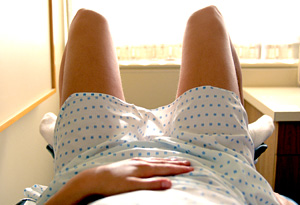What Happens After an Abnormal Pap Smear Test Result?

Photo: Photodisc/Thinkstock
Getting an abnormal result from your regular Pap test can leave a woman feeling the dread of the unknown. Prepare yourself for what happens next with this put-your-mind-at-ease primer by the Mommy Docs.
First of all, try not to be afraid. You will be okay.I've known patients to panic, rush to the Internet and Google anything and everything that could possibly be wrong with them. The truth is, the unknown is far scarier than what will probably happen next.
If you do have some sort of an abnormal result from your Pap test, your next step will probably be a minor procedure called colposcopy with cervical biopsies. This is a quick and minor procedure, so there is rarely any need for anesthetic.
When you enter the exam room for your procedure, you'll probably see a lot of equipment that will look unfamiliar. What is all that stuff? The largest instrument that looks like a microscope on wheels is called a colposcope—essentially a microscope on wheels that allows your doctor to visualize your cervix and vagina magnified.
There also may be some metal instruments and small brushes on the table nearby. Your doctor will use these to take the biopsy. When we do it, we literally pinch and cut off a small piece of a patient's cervix or take a sampling of her cervix with a brush that we rotate back and forth over the area of concern. There's also an instrument that we use to do something called an EEC, or endocervical curettage. This is often the very last part of the procedure, where we scrape some cells from a cervical canal. We always want to be sure a patient does not have abnormal cells hiding in a canal that is not immediately visible.
Why does the room suddenly smell of vinegar? That is acetic acid—essentially, vinegar—which we apply to the cervix with a large cotton swab. The acetic acid makes the abnormal areas really stand out under a green filtered light that helps guide us right to the abnormal areas. Often a patient feels slight burning when the acetic acid is applied to her cervix.
In the room, there will also be several small bottles containing clear liquids and one with something that looks like mustard. The clear solutions are the bottles in which we put cervical biopsy specimens to be sent off to be scrutinized under a microscope by a pathologist. The mustard-like solution is called Monsel's solution.



